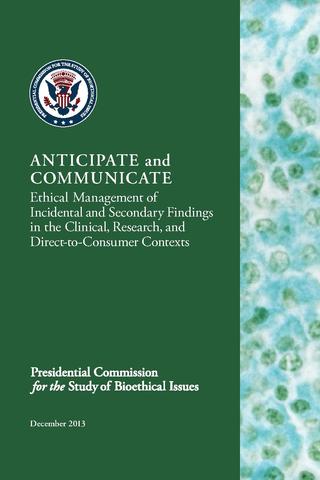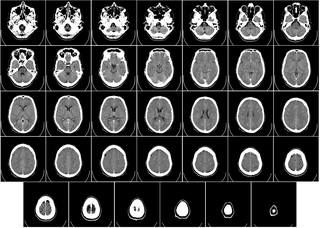Related Research Articles
Delirium is a specific state of acute confusion attributable to the direct physiological consequence of a medical condition, effects of a psychoactive substance, or multiple causes, which usually develops over the course of hours to days. As a syndrome, delirium presents with disturbances in attention, awareness, and higher-order cognition. People with delirium may experience other neuropsychiatric disturbances, including changes in psychomotor activity, disrupted sleep-wake cycle, emotional disturbances, disturbances of consciousness, or, altered state of consciousness, as well as perceptual disturbances, although these features are not required for diagnosis.

The Ludwig Maximilian University of Munich is a public research university in Munich, Bavaria, Germany. Originally established as the University of Ingolstadt in 1472 by Duke Ludwig IX of Bavaria-Landshut, it is Germany's sixth-oldest university in continuous operation.

A concussion, also known as a mild traumatic brain injury (mTBI), is a head injury that temporarily affects brain functioning. Symptoms may include loss of consciousness; memory loss; headaches; difficulty with thinking, concentration, or balance; nausea; blurred vision; dizziness; sleep disturbances, and mood changes. Any of these symptoms may begin immediately, or appear days after the injury. Concussion should be suspected if a person indirectly or directly hits their head and experiences any of the symptoms of concussion. Symptoms of a concussion may be delayed by 1–2 days after the accident. It is not unusual for symptoms to last 2 weeks in adults and 4 weeks in children. Fewer than 10% of sports-related concussions among children are associated with loss of consciousness.
Schizotypal personality disorder, also known as schizotypal disorder, is a cluster A personality disorder. The Diagnostic and Statistical Manual of Mental Disorders (DSM) classification describes the disorder specifically as a personality disorder characterized by thought disorder, paranoia, a characteristic form of social anxiety, derealization, transient psychosis, and unconventional beliefs. People with this disorder feel pronounced discomfort in forming and maintaining social connections with other people, primarily due to the belief that other people harbor negative thoughts and views about them. Peculiar speech mannerisms and socially unexpected modes of dress are also characteristic. Schizotypal people may react oddly in conversations, not respond, or talk to themselves. They frequently interpret situations as being strange or having unusual meanings for them; paranormal and superstitious beliefs are common. Schizotypal people usually disagree with the suggestion that their thoughts and behaviors are a 'disorder' and seek medical attention for depression or anxiety instead.
Post-concussion syndrome (PCS), also known as persisting symptoms after concussion, is a set of symptoms that may continue for weeks, months, or years after a concussion. PCS is medically classified as a mild traumatic brain injury (TBI). About 35% of people with concussion experience persistent or prolonged symptoms 3 to 6 months after injury. Prolonged concussion is defined as having concussion symptoms for over four weeks following the first accident in youth and for weeks or months in adults.
Perseveration, in the fields of psychology, psychiatry, and speech–language pathology, is the repetition of a particular response regardless of the absence or cessation of a stimulus. It is usually caused by a brain injury or other organic disorder. Symptoms include "lacking ability to transition or switch ideas appropriately with the social context, as evidenced by the repetition of words or gestures after they have ceased to be socially relevant or appropriate", or the "act or task of doing so", and are not better described as stereotypy.

Incidental medical findings are previously undiagnosed medical or psychiatric conditions that are discovered unintentionally and during evaluation for a medical or psychiatric condition. Such findings may occur in a variety of settings, including routine medical care, during biomedical research, during post-mortem autopsy, or during genetic testing.

Chronic traumatic encephalopathy (CTE) is a neurodegenerative disease linked to repeated trauma to the head. The encephalopathy symptoms can include behavioral problems, mood problems, and problems with thinking. The disease often gets worse over time and can result in dementia.

Daniel Gregory Amen is an American celebrity doctor who practices as a psychiatrist and brain disorder specialist. He is the founder and chief executive officer (CEO) of the Amen Clinics. He is also the founder of Change Your Brain Foundation, BrainMD, and Amen University. Discover Magazine recognized Amen's research on PTSD and Traumatic Brain Injury (TBI) as one of the top 100 science stories of 2015. He is a twelve-time New York Times best-selling author as of 2023.

Gerhard Ertl is a German physicist and a Professor emeritus at the Department of Physical Chemistry, Fritz-Haber-Institut der Max-Planck-Gesellschaft in Berlin, Germany. Ertl's research laid the foundation of modern surface chemistry, which has helped explain how fuel cells produce energy without pollution, how catalytic converters clean up car exhausts and even why iron rusts, the Royal Swedish Academy of Sciences said.
Second-impact syndrome (SIS) occurs when the brain swells rapidly, and catastrophically, after a person has a second concussion before symptoms from an earlier one have subsided. This second blow may occur minutes, days, or weeks after an initial concussion, and even the mildest grade of concussion can lead to second impact syndrome. The condition is often fatal, and almost everyone who is not killed is severely disabled. The cause of SIS is uncertain, but it is thought that the brain's arterioles lose their ability to regulate their diameter, and therefore lose control over cerebral blood flow, causing massive cerebral edema.
Samuel E. Gandy, is a neurologist, cell biologist, Alzheimer's disease (AD) researcher and expert in the metabolism of the sticky substance called amyloid that clogs the brain in patients with Alzheimer's. His team discovered the first drugs that could lower the formation of amyloid.

Computed tomography of the head uses a series of X-rays in a CT scan of the head taken from many different directions; the resulting data is transformed into a series of cross sections of the brain using a computer program. CT images of the head are used to investigate and diagnose brain injuries and other neurological conditions, as well as other conditions involving the skull or sinuses; it used to guide some brain surgery procedures as well. CT scans expose the person getting them to ionizing radiation which has a risk of eventually causing cancer; some people have allergic reactions to contrast agents that are used in some CT procedures.

Prevention of mild traumatic brain injury involves taking general measures to prevent traumatic brain injury, such as wearing seat belts, using airbags in cars, securing heavy furnitures and objects before earthquake or covering and holding under the table during an earthquake. Older people are encouraged to try to prevent falls, for example by keeping floors free of clutter and wearing thin, flat, shoes with hard soles that do not interfere with balance.
Concussions, a type of mild traumatic brain injury, are a frequent concern for those playing sports, from children and teenagers to professional athletes. Repeated concussions are known to cause neurological disorders, particularly chronic traumatic encephalopathy (CTE), which in professional athletes has led to premature retirement, erratic behavior and even suicide. A sports-related concussion is defined as a "complex pathophysiological process affecting the brain, induced by biomechanical forces". Because concussions cannot be seen on X-rays or CT scans, attempts to prevent concussions have been difficult.
Ulla Mitzdorf was a German scientist. She contributed to diverse areas including physics, chemistry, psychology, physiology, medicine and gender studies.

Katya Rubia is a professor of Cognitive Neuroscience at the MRC Social, Genetic and Developmental Psychiatry Centre and Department of Child and Adolescent Psychiatry, both part of the Institute of Psychiatry, King's College London.
A traumatic brain injury (TBI) is a blow, jolt or penetration to the head that disrupts the function of the brain. Most TBIs are caused by falls, jumps, motor vehicle traffic crashes, being struck by a person or a blunt object, and assault. Student-athletes may be put at risk in school sports, creating concern about concussions and brain injury. A concussion can be caused by a direct blow to the head, or an indirect blow to the body that causes reactions in the brain. The result of a concussion is neurological impairment that may resolve spontaneously but may also have long-term consequences.
Sharlene D. Newman is an American cognitive neuroscientist, executive director of the Alabama Life Research Institute at the University of Alabama (UA), Professor in the Department of Psychology at UA, and an adjunct professor in the Department of Psychological and Brain Sciences at Indiana University.
A pediatric concussion, also known as pediatric mild traumatic brain injury (mTBI), is a head trauma that impacts the brain capacity. Concussion can affect functional, emotional, cognitive and physical factors and can occur in people of all ages. Symptoms following after the concussion vary and may include confusion, disorientation, lightheadedness, nausea, vomiting, blurred vision, loss of consciousness (LOC) and environment sensitivity. Concussion symptoms may vary based on the type, severity and location of the head injury. Concussion symptoms in infants, children, and adolescents often appear immediately after the injury, however, some symptoms may arise multiple days following the injury leading to a concussion. The majority of pediatric patients recover from the symptoms within one month following the injury. 10-30% of children and adolescents have a higher risk of a delayed recovery or of experiencing concussion symptoms that are persisting.
References
- ↑ "Inga Koerte, M.D., Ph.D. | Psychiatry Neuroimaging Laboratory". Archived from the original on 2020-07-13. Retrieved 2020-07-10.
- ↑ "Inga Katharina Koerte - Graduate School of Systemic Neurosciences GSN-LMU - LMU Munich". www.gsn.uni-muenchen.de. Retrieved 2020-07-10.
- ↑ "Team - Pediatric Neuroimaging - cBRAIN". Pediatric Neuroimaging (in German). Retrieved 2020-07-10.
- ↑ "Lab Members | Psychiatry Neuroimaging Laboratory". Archived from the original on 2020-07-10. Retrieved 2020-07-10.
- ↑ "Prof. Dr. med. Inga Koerte". LMU Klinikum. Archived from the original on 2020-07-11. Retrieved 2020-07-10.
- ↑ "Schädigt Kopfballspiel das Gehirn? - LMU München". www.uni-muenchen.de (in German). Retrieved 2020-07-10.
- ↑ "Inga Katharina Koerte - Google Scholar". scholar.google.com. Retrieved 2020-07-10.
- ↑ Koerte, Inga K.; Ertl-Wagner, Birgit; Reiser, Maximilian; Zafonte, Ross; Shenton, Martha E. (2012-11-14). "White matter integrity in the brains of professional soccer players without a symptomatic concussion". JAMA. 308 (18): 1859–1861. doi:10.1001/jama.2012.13735. ISSN 1538-3598. PMC 4103415 . PMID 23150002.
- ↑ "Team - Pediatric Neuroimaging - cBRAIN". Pediatric Neuroimaging (in German). Retrieved 2020-07-10.
- ↑ "LMU Preistraegerinnen 2021".
- ↑ "CV Inga Koerte" (PDF).
- ↑ "CV Inga Koerte" (PDF).
- ↑ "ERC FUNDED PROJECTS". ERC: European Research Council. Archived from the original on 2021-01-13. Retrieved 2020-07-10.
- ↑ "Neuroprecise is under construction". Archived from the original on 2020-07-11. Retrieved 2020-07-10.
- ↑ "RepImpact". Pediatric Neuroimaging (in German). Retrieved 2020-07-10.
- ↑ "ENIGMA Sports-Related Injury « ENIGMA" . Retrieved 2020-07-10.
- ↑ Koerte, Inga. "Sex Differences in Brain Structure and Function After Sports-Related Concussion".
- ↑ Koerte, Inga K.; Ertl-Wagner, Birgit; Reiser, Maximilian; Zafonte, Ross; Shenton, Martha E. (2012-11-14). "White matter integrity in the brains of professional soccer players without a symptomatic concussion". JAMA. 308 (18): 1859–1861. doi:10.1001/jama.2012.13735. ISSN 1538-3598. PMC 4103415 . PMID 23150002.
- ↑ Sollmann, Nico; Echlin, Paul S.; Schultz, Vivian; Viher, Petra V.; Lyall, Amanda E.; Tripodis, Yorghos; Kaufmann, David; Hartl, Elisabeth; Kinzel, Philipp; Forwell, Lorie A.; Johnson, Andrew M. (2018). "Sex differences in white matter alterations following repetitive subconcussive head impacts in collegiate ice hockey players". NeuroImage. Clinical. 17: 642–649. doi:10.1016/j.nicl.2017.11.020. ISSN 2213-1582. PMC 5709295 . PMID 29204342.
- ↑ Koerte, Inga K.; Kaufmann, David; Hartl, Elisabeth; Bouix, Sylvain; Pasternak, Ofer; Kubicki, Marek; Rauscher, Alexander; Li, David K. B.; Dadachanji, Shiroy B.; Taunton, Jack A.; Forwell, Lorie A. (December 2012). "A prospective study of physician-observed concussion during a varsity university hockey season: white matter integrity in ice hockey players. Part 3 of 4". Neurosurgical Focus. 33 (6): E3: 1–7. doi:10.3171/2012.10.FOCUS12303. ISSN 1092-0684. PMC 5687247 . PMID 23199426.
- ↑ Koerte, Inga K.; Lin, Alexander P.; Muehlmann, Marc; Merugumala, Sai; Liao, Huijun; Starr, Tyler; Kaufmann, David; Mayinger, Michael; Steffinger, Denise; Fisch, Barbara; Karch, Susanne (2015-09-01). "Altered Neurochemistry in Former Professional Soccer Players without a History of Concussion". Journal of Neurotrauma. 32 (17): 1287–1293. doi:10.1089/neu.2014.3715. ISSN 1557-9042. PMC 4545372 . PMID 25843317.
- ↑ Guenette, Jeffrey P.; Shenton, Martha E.; Koerte, Inga K. (February 2018). "Imaging of Concussion in Young Athletes". Neuroimaging Clinics of North America. 28 (1): 43–53. doi:10.1016/j.nic.2017.09.004. ISSN 1557-9867. PMC 5728158 . PMID 29157852.